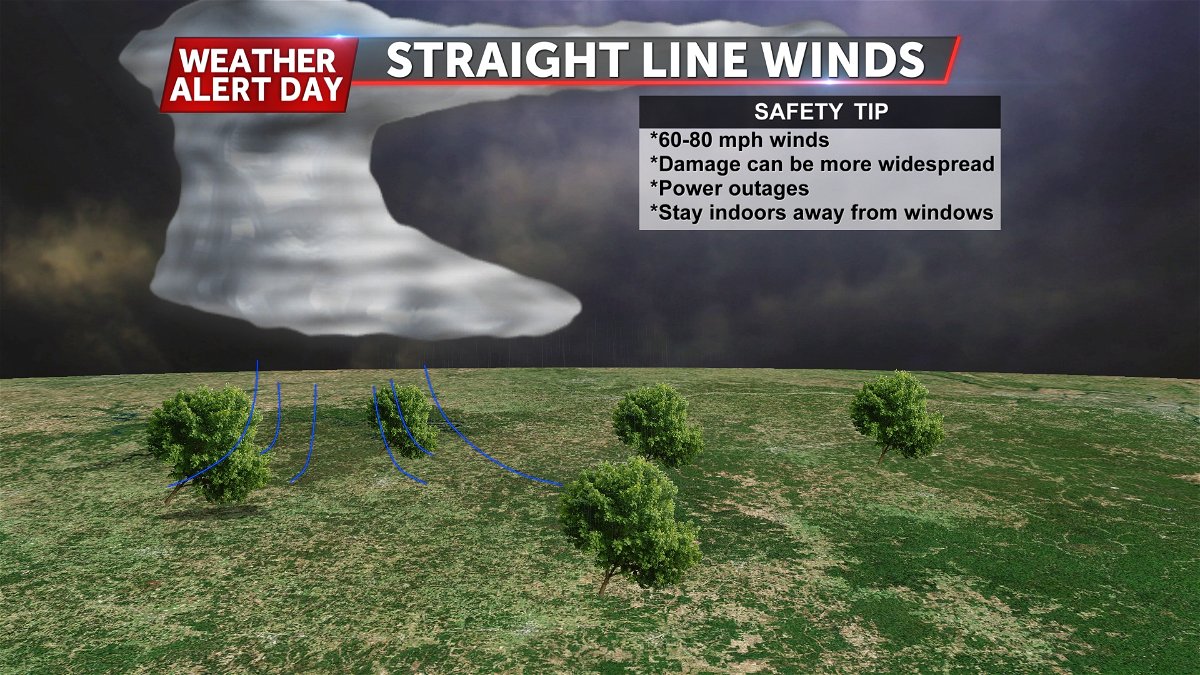The science of straight-line winds
Many people think about lightning, hail, and tornadoes whenever they hear the term "severe storms". Although severe storms can bring all three of these things, one of the most widespread threats usually seen ties to wind damage from straight-line winds.

Straight-line winds have the power to reach up to and possibly over 100 mph in more rare occasions. This is faster than winds in EF-0 tornadoes and even some EF-1 tornadoes which can range from 86-110 mph. A telling sign of straight-line wind damage is fallen trees, branches, or other structures/ vegetation all facing the same direction. At times, straight-line wind damage can look very similar to that of a tornado to the untrained eye. Straight-line winds can span across entire regions of states and can last hours as storms continue to move into better or sustainable environments.

Straight-line winds (otherwise known as gust fronts) occur as warm air rises ahead of the storm. As the warmer air rises, the temperature begins to cool which eventually becomes more dense. This now denser air will then fall into the core of the storm making any horizontal winds in the storm become vertical falling back towards the surface extending ahead of the storm cells.
It is important to remain indoors and away from windows whenever severe storms are approaching your location. Power outages can also become a problem with stronger straight-line winds. If you come across downed or damaged powerline make sure to stay away as you could be at risk of electrical shock, even if you are just standing several feet away connected by a ground puddle.
